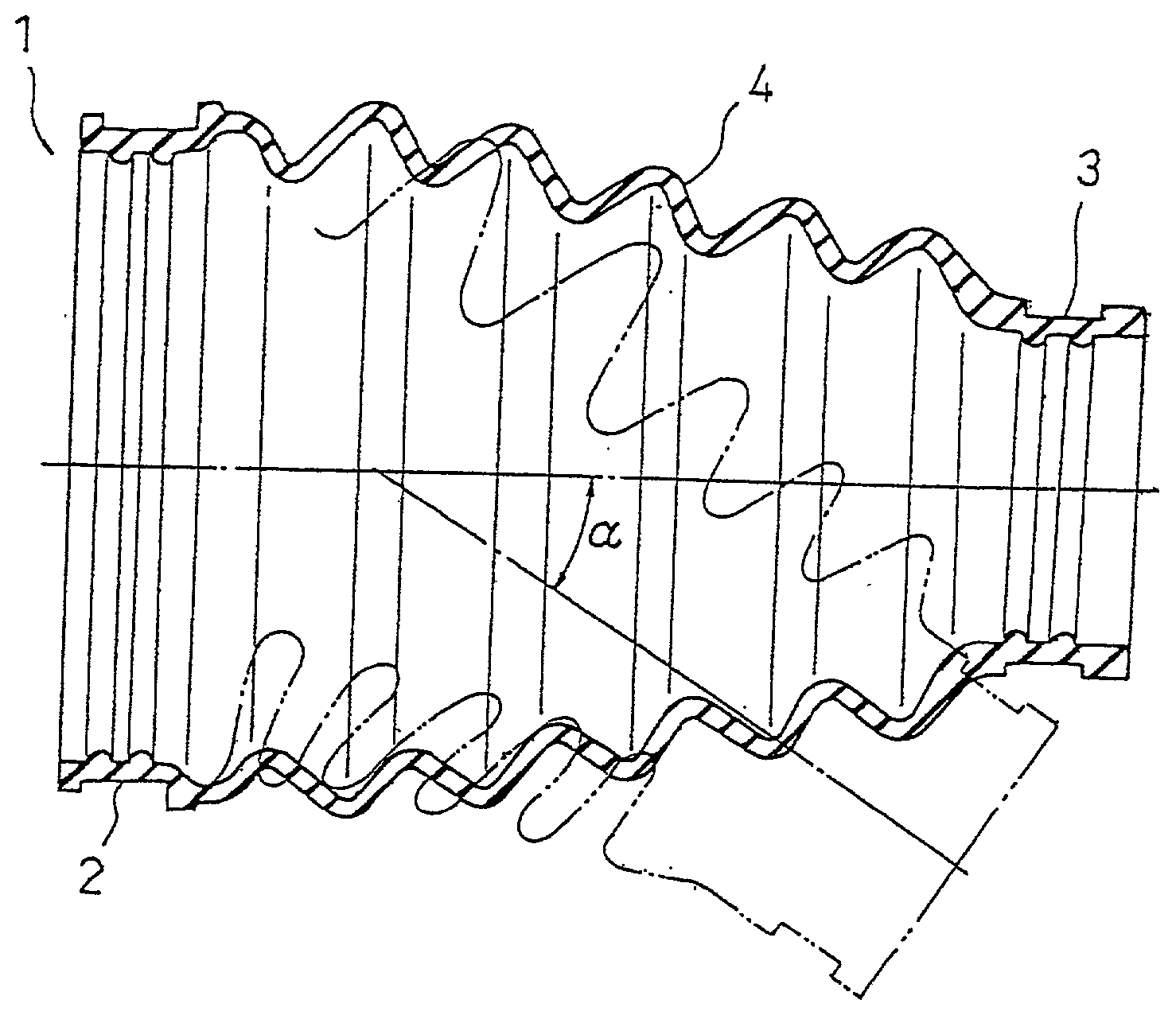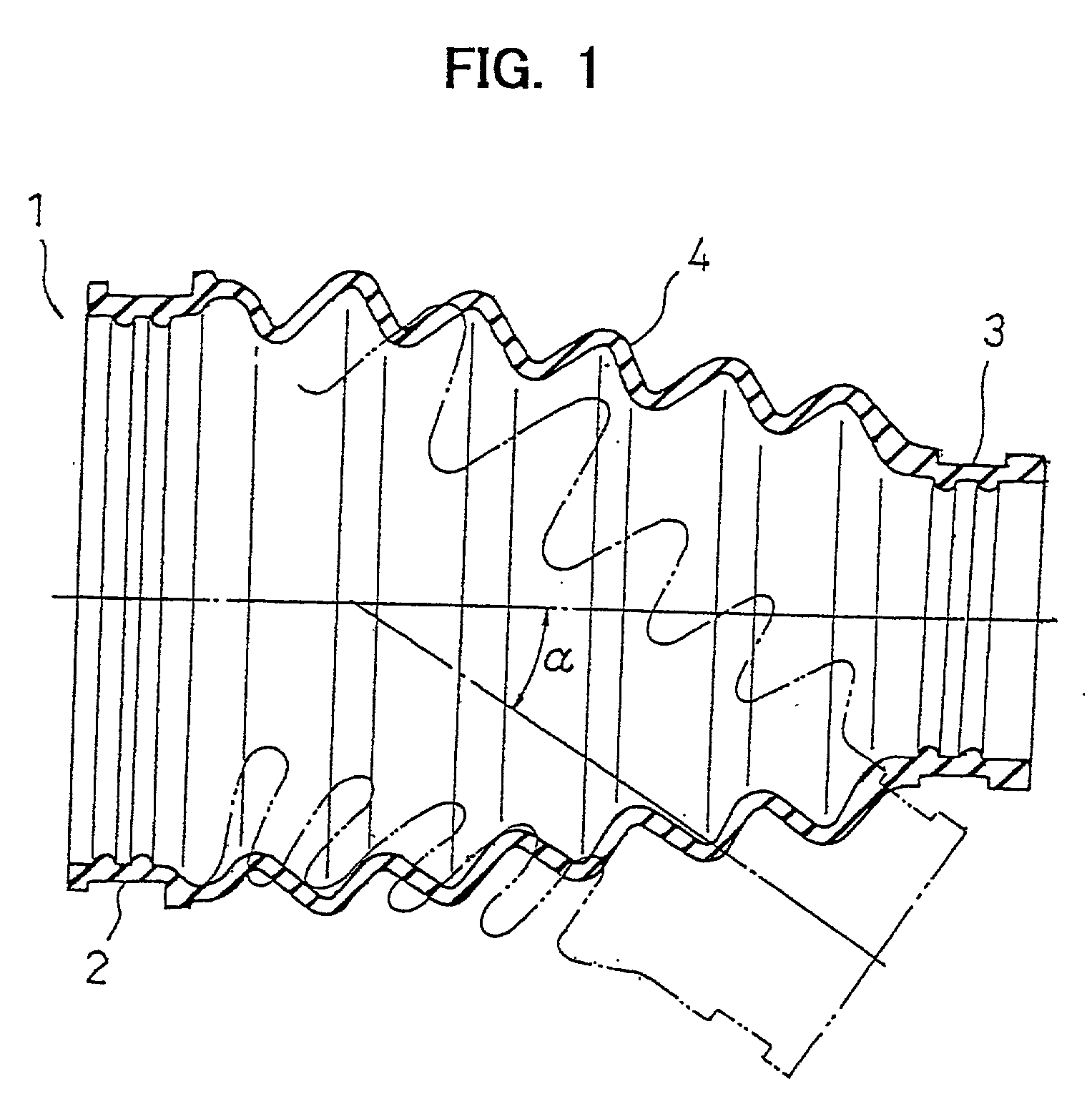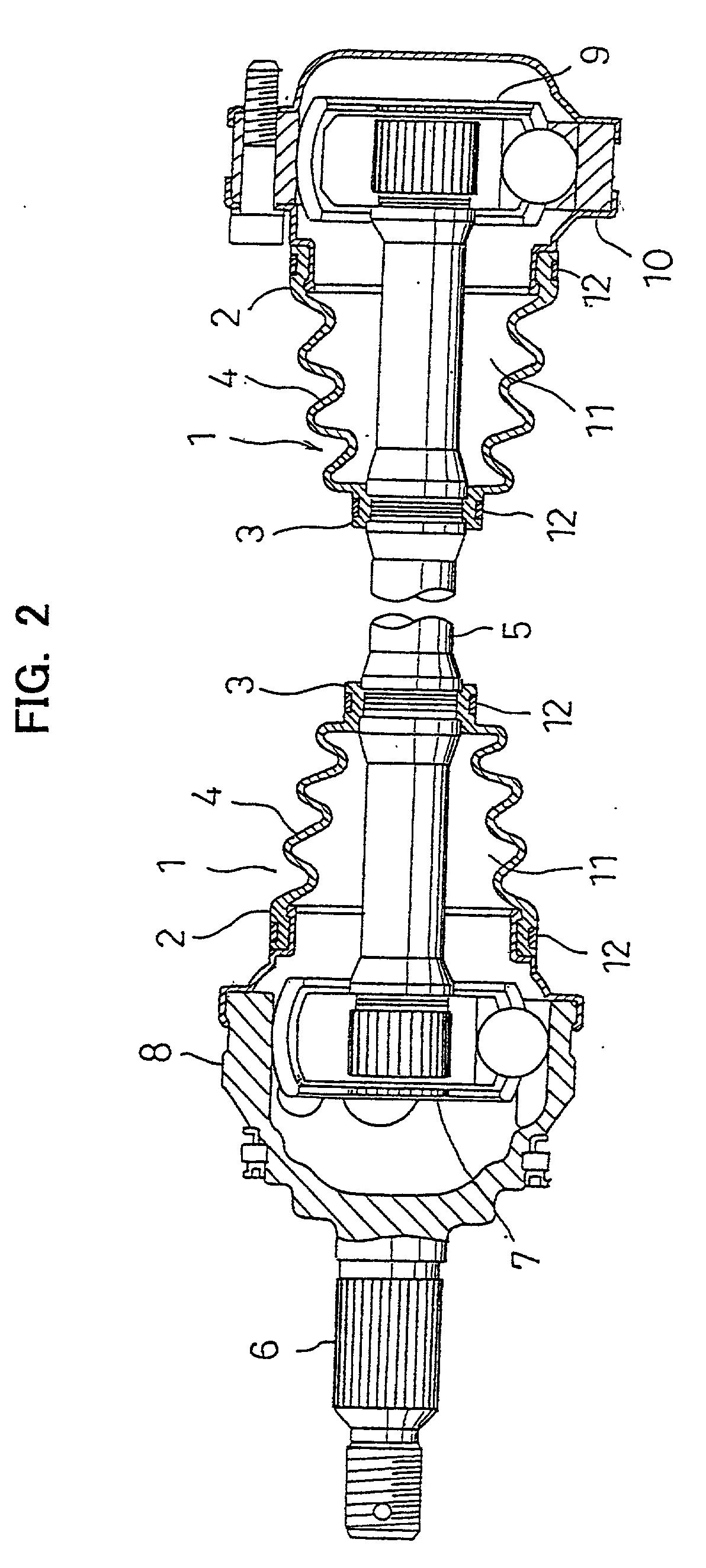Flexible resin boot and method for producing it
- Summary
- Abstract
- Description
- Claims
- Application Information
AI Technical Summary
Benefits of technology
Problems solved by technology
Method used
Image
Examples
examples 1 to 5
[0073] To a base material of a thermoplastic polyester elastomer, PELPRENE P46D (from Toyo Boseki--this comprises hard segments of a polymer of terephthalic acid and 1,4-butanediol and soft segments of PTMG, and has a PTMG comonomer content of from 40 to 50% by weight), added was mineral paraffinic process oil, BJ Oil(from Kyodo Yushi) to prepare a composition for boots. Using an injection molding machine, the composition was molded into flexible resin boots. The blend ratio of mineral oil was varied within a range of from 0.5 to 5.0 parts by weight to 100 parts by weight of the thermoplastic polyester elastomer, as in Table 1 below.
[0074] BJ Oil used herein was analyzed according to a method of structural group analysis (n-d-M method), and it had a paraffin content of 68%, a naphthene content of 25% and an aromatic content of 7%. Through GPC, the molecular weight of BJ Oil was measured. Though varying depending on its lots, the oil had a number-average molecular weight of from 660 ...
examples 6 to 10
[0086] The same thermoplastic polyester elastomer as in Examples 1 to 5 was used as the base material. To this was added mineral paraffinic process oil having a number-average molecular weight of 200 (Example 6), 500 (Example 7), 750 (Example 8), 1000 (Example 9), or 2000 (Example 10), as in Table 2 below. The resulting mixture was molded into flexible resin boots in the same manner as in Example 1. In these Examples 6 to 10, the blend ratio of the paraffinic process oil was 1.5 parts by weight to 100 parts by weight of the thermoplastic polyester elastomer.
examples 11 to 15
[0090] The same thermoplastic polyester elastomer as in Examples 1 to 5 was used as the base material. To this was added mineral paraffinic process oil having a weight-average molecular weight of 200 (Example 11), 500 (Example 12), 950 (Example 13), 1400 (Example 14), or 2000 (Example 15), as in Table 3 below. Using an injection molding machine, the resulting mixture was molded into flexible resin boots. In these Examples 11 to 15, the blend ratio of the paraffinic process oil was 1.5 parts by weight to 100 parts by weight of the thermoplastic polyester elastomer.
PUM
| Property | Measurement | Unit |
|---|---|---|
| Length | aaaaa | aaaaa |
| Fraction | aaaaa | aaaaa |
| Fraction | aaaaa | aaaaa |
Abstract
Description
Claims
Application Information
 Login to View More
Login to View More - R&D
- Intellectual Property
- Life Sciences
- Materials
- Tech Scout
- Unparalleled Data Quality
- Higher Quality Content
- 60% Fewer Hallucinations
Browse by: Latest US Patents, China's latest patents, Technical Efficacy Thesaurus, Application Domain, Technology Topic, Popular Technical Reports.
© 2025 PatSnap. All rights reserved.Legal|Privacy policy|Modern Slavery Act Transparency Statement|Sitemap|About US| Contact US: help@patsnap.com



